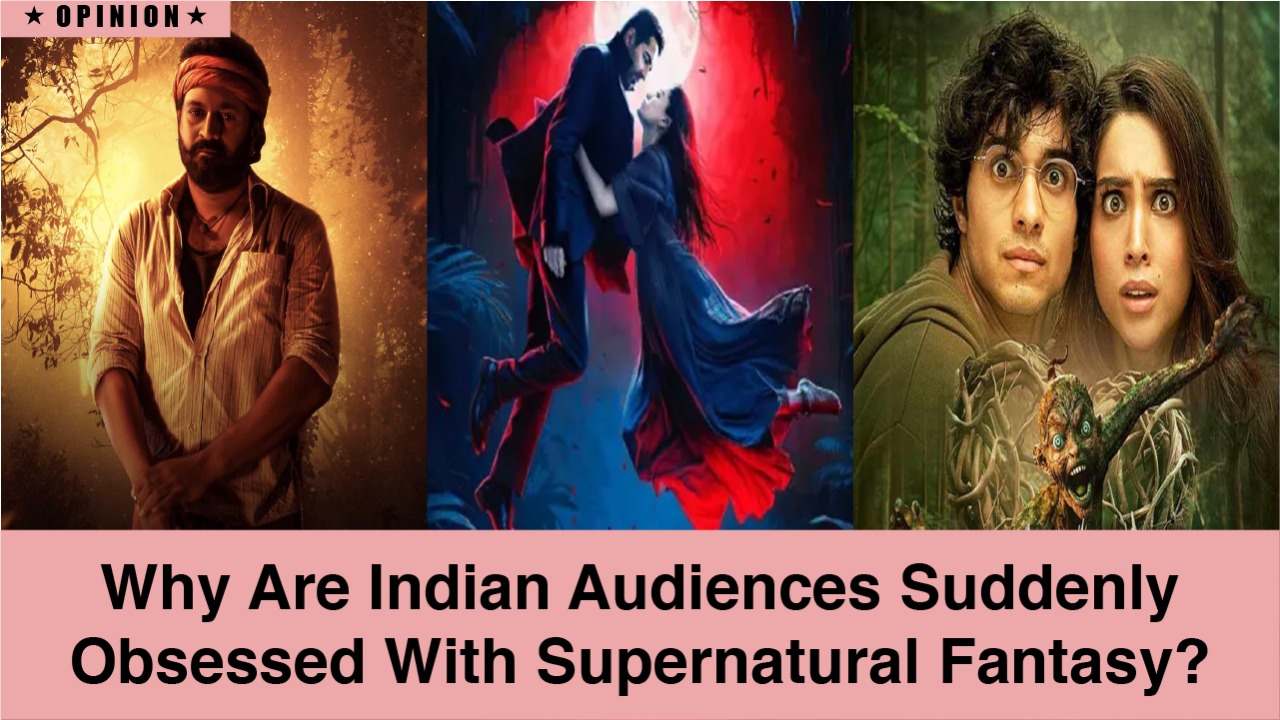Anyone else who is super annoyed by the endless reels on social media that push insights on paranormal activities, witchcraft, astrology and more? There is no blatant denial of its existence or truth, for I have come across some of the most genuine souls so far, who have helped people with their wisdom in a similar spectrum. However, now we only glance at spam, with credibility becoming a question.
That brings us to a hot-end debacle of supernaturalism. The treatment of supernatural elements is not new to the context. We have owned our love and inclination for supernatural showcases over the decades. We can trace back as far as 1920, with “The Cabinet of Dr. Caligari.” In the 1930s and 1940s, Universal Studios brought Gothic horror into the spotlight with Dracula (1931) and Frankenstein (1931), transforming monsters into icons and darkness into a spectacle.
By the 1960s and 1970s, directors such as Alfred Hitchcock and Roman Polanski began to strip away the theatrical, drawing horror closer to home. In Psycho (1960) and Rosemary’s Baby (1968), fear came not from what was seen, but from what lurked beneath the surface—within the mind, the home, and society itself.
The 1980s saw the rise of the slasher: brutal, fast, and unapologetically direct. Then, in the 1990s and early 2000s, the supernatural returned—more subdued, but no less disturbing. Films like The Sixth Sense (1999) and The Ring (2002) capitalised on modern unease, exploring themes of technology, isolation, and the quiet terror of the unknown.
More recently, filmmakers have begun to use horror as a mirror. Get Out (2017) and Hereditary (2018) wove social tension and psychological depth into the fabric of the genre, demonstrating that the supernatural need not be separate from reality—it can be its shadow.
Indian cinema has its fair share too—Indian cinema has long dabbled in the supernatural, not as borrowed spectacle, but as something deeply rooted in its soil and storytelling. From whispered village legends to ancient curses, the uncanny has always found a place on the Indian screen, sometimes cloaked in melodrama, sometimes woven with quiet dread. The haunted mansion, the vengeful spirit, the forest that watches—these are not mere devices, but echoes of a collective imagination shaped by centuries of myth and folklore. Over time, this strand has grown more assured. Films like Tumbbad, Stree, Bulbbul, and Kantara don’t simply entertain; they conjure. They draw from the old, the feared, and the half-remembered, giving us stories where the past lingers and the supernatural feels not distant, but close, tangled in land, memory, and belief.
The mysticism that we get to taste in cinema
Cinema has long drawn from the mystical, conjuring worlds where the veil between the known and the unknowable is paper-thin. Ghosts and spirits haunt its frames—not merely as frightful figures, but as echoes of grief and unfinished stories, as seen in The Others or The Conjuring. Witchcraft and dark magic stir beneath the surface, wielded through curses and rituals in films like The Witch, or transformed into a kaleidoscopic spectacle in Doctor Strange. Prophecies shape destinies, guiding or damning characters with ancient foresight, as in Dune or The Green Knight. Cursed objects—videotapes, grimoires, relics—become vessels of hidden dread, as chillingly portrayed in The Ring or The Evil Dead. The screen bends further, splitting into parallel worlds and fractured realities, where identity and time blur, as in Donnie Darko or Everything Everywhere All at Once. Mythological beings walk among mortals, from gods of vengeance in The Northman to fauns and monsters in Pan’s Labyrinth, steeped in folklore and forgotten power. And in the shadows, secret societies and occult orders murmur forbidden knowledge, their rituals shaping the hidden architecture of fear—as disturbingly unveiled in Hereditary and Eyes Wide Shut. Together, these elements form a rich, arcane language through which cinema explores our oldest fears and deepest fascinations.
Lately, there’s been a quiet but powerful shift, more and more Indians are drawn to supernatural stories that feel like echoes of their own past. These aren’t just tales spun for thrill; they’re the same stories many grew up hearing around fires or during long nights, filled with spirits, curses, and ancient legends that have always lingered at the edges of everyday life. Now, through films, shows, and games, these old stories are finding new forms, familiar yet strikingly fresh, bringing a deep sense of connection. Whether it’s the dark beauty of Tumbbad, the earthy spirit of Kantara, or the growing wave of supernatural tales in local languages, these stories tap into something very close to home.

